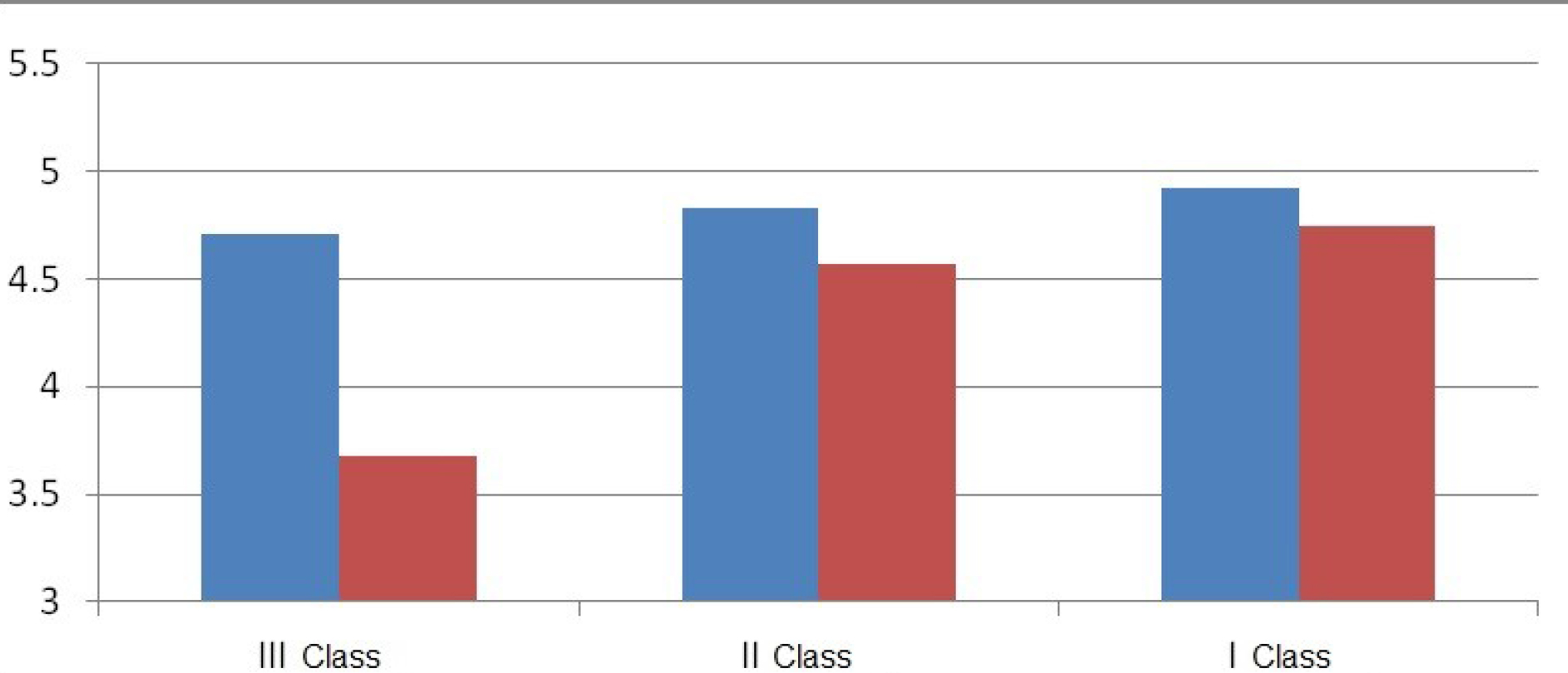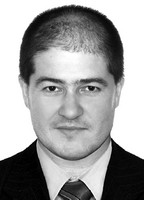Strength fitness rates of junior volleyball and futsal players: comparative analysis
Фотографии:
ˑ:
PhD, Associate Professor E.V. Kudryashov1
1Perm National Research Polytechnic University, Perm
Keywords: comparative characteristics, indicators, strength, fitness, female athletes, volleyball, futsal.
Introduction. As known, different sports impose different requirements to the development of specific physical qualities. In this sense, it is common practice to differentiate the strength training process based on its orientation: overall strength training and development of specific strength qualities making it possible to succeed in the chosen sports specialization. It was found that the formation of a certain strength quality development level is accompanied by an increase in the level of speed and enhancement of coordination abilities and other physical qualities. Thus, strength building is among the key types of athletic training within the training and competitive processes in many sports [1-4].
According to experts, improvement of athletes’ capability to realize their strength qualities is one of the important aspects of strength training, which is achieved by providing the optimal balance between strength, sports technique and tactics, functional capabilities of the body and other training process components.
In sport science, they distinguish between absolute and relative strength. Absolute strength is the maximum strength displayed by a man during one or another motor action, i.e., it is the maximum value of muscular tension regardless of the man’s body mass. Relative strength is a value obtained by determining the ratio of the absolute strength to the body mass of an athlete. Most often it is used to compare strength abilities of athletes with different body mass indices with due regard to the specifics of a particular sport [5-6].
Strength, alongside other physical qualities, limits the development of sport skills of athletes involved in sports games. This issue has become especially acute in recent years, with the increasing level of development of women's volleyball and futsal sports and growing popularity of these sports games.
In this regard, we need to formulate specific practical recommendations for training process design, management and control system, as well as for solution of other issues associated with athletic training. Therefore, it is an urgent and timely problem for modern sports science and sports practice to determine the strength indices in female athletes.
Objective of the study was to make a comparative analysis of strength fitness rates of junior female volleyball and futsal players.
Methods and structure of the study. We examined mass-class female athletes engaged in volleyball and futsal sports.
Using the B.M. Rybalko’s method and V.M. Abalakov’s dynamometry, we studied the strength of thigh flexor/extensor muscles, shin flexor/extensor muscles, plantar flexor muscles, shoulder flexor/extensor muscles, forearm flexor/extensor muscles, hand muscles in the athletes. The findings were used to calculate the relative strength indices by the following formula:
Srel =![]() ,
,
where Srel – relative strength, S![]() - absolute strength, BM – athlete’s body mass.
- absolute strength, BM – athlete’s body mass.
Results and discussion. The tables below list the tests based results (Tables 1-2).
Table 1. Relative strength indices in female volleyball players of different skill levels
|
Relative strength indices |
Class I |
Class II |
Class III |
|
|
|
|
|
||
|
n=38 |
n=40 |
n=46 |
||
|
Relative strength of 5 leg muscle groups |
4.75 |
4.57 |
3.68 |
|
|
Relative strength of 5 arm muscle groups |
2.1 |
2.05 |
1.89 |
|
|
7.26 |
7.0 |
5.93 |
Table 2. Relative strength indices in female futsal players
|
Relative strength indices |
Class I |
Class II |
Class III |
|
|
|
|
|
|
n=21 |
n=21 |
n=23 |
|
|
Relative strength of 5 leg muscle groups |
4.92 |
4.83 |
4.71 |
After that, the data were summarized in 3 groups: indices of the 5 leg muscle groups, indices of the 5 arm muscle groups and indices of the 11 muscle groups subject to the study.
The strength fitness tests revealed that with the progress in sports skills the relative strength indices of such muscle groups as thigh, shin and shoulder extensor muscles, forearm flexor muscles and hand strength, had a tendency to increase.
The growth of the relative strength indices with the improvement of sports skills of female volleyball players became particularly marked in terms of the aggregate indices of the 5 leg muscle groups (from the Class III to I the increment was 1.07), 5 arm muscle groups (from the Class III to І the increment was 0.21), 11 muscle groups (from the Class III to I the increment was 1.33) (Figure 1).

Fig. 1. Dynamics of changes in strength fitness of female athletes engaged in futsal and volleyball
Similar patterns were detected in respect to strength fitness of the female futsal players. The results obtained were the following: the strength test results changed with the improvement of sports skills of the female futsal players. There is a particularly direct relationship between these parameters and the growth of sports skills, and not in terms of the strength indices in individual muscle groups, but in terms of their aggregate values. Thus, the aggregate indices of relative strength of the 5 leg muscle groups equaled 4.71 in the Class III athletes, 4.83 in the Class II athletes, and 4.92 in the Class I athletes. The increment of the results equaled 0.11 from the Class III to II and 0.9 (less significant changes) from the Class II to I. The study of the arm muscle strength indices failed to reveal any statistically significant changes with the progress in sports skills of the female futsal players.
Conclusion. The studies resulted in the following:
- Strength qualities of female volleyball and futsal players increase at all training stages with their athletic progress.
- In the female futsal players, the level of development of strength of the 5 arm muscle groups was significantly higher than that in the volleyball players. In terms of the relative strength indices in the 5 arm muscle groups, we did not observe any significant relationship between these indices and the growth of sports skills of female futsal players.
- The results obtained may be used for the strength fitness benchmarking analysis when organizing the training process in volleyball and futsal.
References
- Aliev E.G., Andreev O.S., Eremenko K.V. Problemy organizatsii podgotovki sportivnogo rezerva v mini-futbole [Problems in organizing the training of futsal sports reserve]. Uchenye zapiski un-ta im. P.F. Lesgafta, 2008, no. 6 (40), pp. 3-5.
- Verkhoshansky Y.V. Osnovy spetsialnoy silovoy podgotovki v sporte [Fundamentals of special power training in sports]. 3 th ed. Moscow: Sovetskiy sport publ., 2013, 216 p.: il.
- Ziambetov V.Y., Minogina E.V. Sredstva vospitaniya obshchey vynoslivosti u shkolnikov 11-12 let na urokakh po voleybolu [General endurance training means for 11-12 year-olds at volleyball lessons]. Mater. VI Mezhdunar. nauch.-prakt. konf. "Fizicheskaya kultura, sport i turizm. Integratsionnye protsessy nauki i praktiki" [Proc. VI Intern. res.-pract. conf. "Physical Culture, Sports and Tourism: Integration Processes of Science and Practice"], 2013, pp. 323-327.
- Kronnikov N.D. Podvizhnye igry pri obuchenii voleybolu [Active games when teaching volleyball]. Fizicheskaya kultura v shkole, 2013, no. 7, pp. 45-49.
- Kudryashov E.V. Modelirovanie silovoy podgotovlennosti sportsmenok v basketbole i futzale [Modeling strength fitness of female basketball and futsal players]. Teoriya i praktika fiz. Kultury, 2016, no. 1.
- Kudryashov E.V. Pedagogicheskiy kontrol za strukturoy fizicheskoy podgotovlennosti voleybolistok. Metod. rekom. [Pedagogical control over structure of physical fitness of volleyball players: method. rek.]. Lugansk, 2005, 30 p.
Corresponding author: kudryashov-e-v@mail.ru
Abstract
A modern athletic training system management process always includes athletic fitness and progress rating components to find whether or not the training loads are harmonised with the players’ adaptive capability and rehabilitation process in a long run. Progress data may be obtained by a theoretically grounded rating test system, standards and functionality rating criteria making it possible to profile progress in specific physical qualities in particular and different physical fitness aspects on the whole.
The study analyses the issues of the junior female athletes’ strength fitness in volleyball and futsal. An experimental study was carried out to rate the strength qualities in the mass-class female athletes. The study findings may be applied in the team sport training process for the strength building process control with the relevant timely corrections to the training system.
The study data and findings may be beneficial for the volleyball and futsal coaches and analysts in their training process design initiatives. The study data may be also helpful for the current and staged athletic progress rating tests to provide grounds for the relevant training process management decisions. The study findings make it possible to select and manage the training models on the most efficient basis, apply the relevant training methods and design their application hierarchy.
Although the study is not expected to decisively solve the raft of issues addressed in the article, we still hope that the study data and findings may be beneficial for the coaches and sport specialists in the elite female players’ training process.


